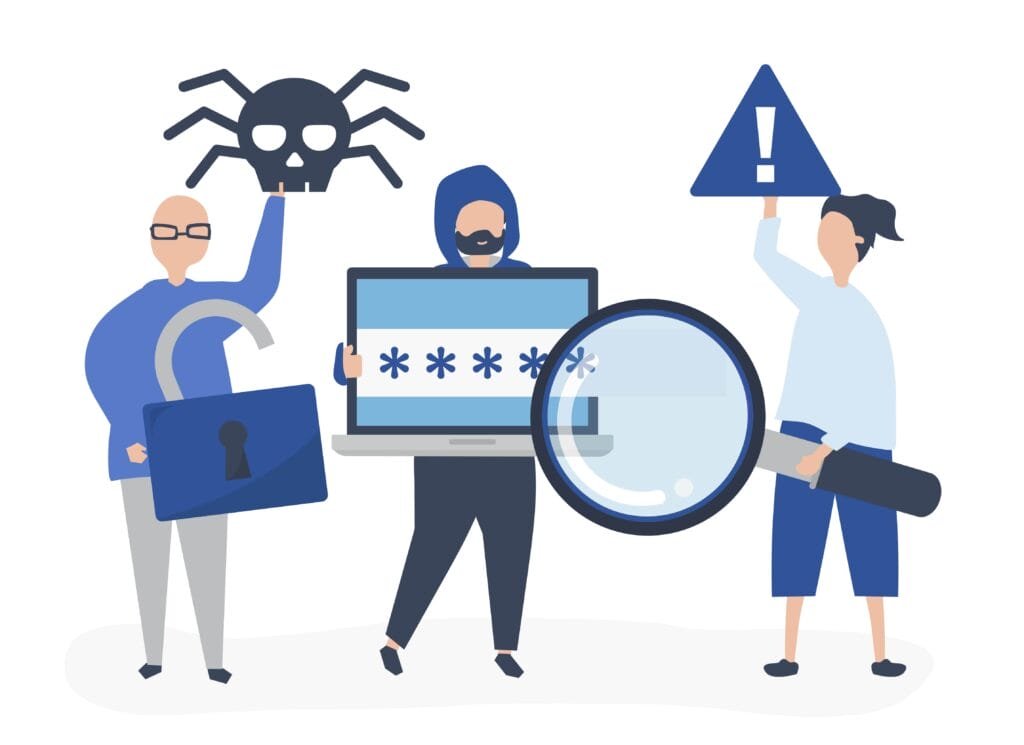Decode the Tactics- Understanding Elicitation in Cyber Security
In the current digital era, with cyber threats ever-present, it is critical to understand the strategies used by bad actors to keep an online environment safe. Elicitation is one such strategy that frequently goes unreported but can have disastrous results. The complexities of elicitation in cybersecurity are explored in this article, along with its many approaches, psychological foundations, practical applications, impact, detection and prevention strategies, legal ramifications, and emerging developments.
Introduction to Elicitation in Cyber Security
In the field of cybersecurity, elicitation refers to the skill of discreetly manipulating or deceiving persons or organizations to get sensitive information. Cybercriminals and hackers use it as a psychological technique to obtain information or get unauthorized access to networks or systems.
Understanding the concept of elicitation is crucial for both individuals and cybersecurity experts. Organizations can strengthen their defenses against potential threats and secure their sensitive data by being aware of the strategies employed in elicitation attempts.
Types of Elicitation Techniques
Elicitation techniques come in a variety of forms, from simple questioning to more sophisticated psychological manipulation approaches. It’s critical to understand the different strategies employed by bad actors to identify and reduce potential risks. The following provides thorough explanations of popular elicitation methods:
Direct Questioning
One of the easiest yet most powerful elicitation strategies used by attackers is direct questioning. It involves politely requesting private information from someone while masking the request as an appropriate inquiry. To acquire the trust of their targets, attackers may take the identity of colleagues, service providers, or authorities. An attacker might, for instance, phone a company’s help desk and pretend to be an employee who needs help changing their password because they forgot it. By convincing the helpdesk representative of their legitimacy, the attacker can obtain sensitive information such as login passwords.
Phishing
Phishing is a common type of cyberattack that uses deceit to fool people into disclosing sensitive information, such as bank account information or login credentials. Typically, attackers employ phony emails, texts, or websites that look authentic to trick victims into revealing personal information. Phishing attacks frequently make use of behavioral characteristics of people, including anxiety or a sense of urgency, to have their victims respond right away. To trick the receiver into believing that their account has been hacked a phishing email, for example, can pose as a reliable business or service provider and ask them to click on a malicious link to confirm their identity. The attacker can use the information for malicious intent once the victim inputs their credentials on the phony website.
Social Engineering
A large range of elicitation techniques known as “social engineering” takes advantage of human psychology to persuade others into divulging private information or taking particular activities. In contrast to conventional hacking techniques that concentrate on technical vulnerabilities, social engineering goes at the weakest component of any security system: people. Attackers frequently use strategies including threats, deception, and impersonation to win over their targets’ trust and extract important data. An attacker could, for instance, pose as a reliable colleague or authority figure to deceive a worker into giving away their login information or allowing unlawful access to confidential systems or data.
Tailgating
Tailgating, which is another name for piggybacking, is a physical security breach in which an unauthorized person follows an authorized person into a building or restricted area. The method takes advantage of people’s innate tendency to open doors for others or steer clear of conflict. Attackers may carry objects that give them the appearance of credibility, like a briefcase or clipboard, or they may dress in a way that matches that of staff members or guests. The attacker has unlimited access to sensitive places and information once inside the premises.
Psychological Principles Behind Elicitation

Psychological Principles
In cybersecurity, explanation approaches frequently depend on taking advantage of basic psychological concepts to coerce people into divulging private information or acting in a particular way. Recognizing and reducing possible risks requires an understanding of these fundamental ideas. Here are thorough descriptions of a few of the fundamental psychological concepts behind elicitation:
Authority
According to the authority principle, people are more inclined to abide by orders or requests from those they regard as powerful. Human psychology has a fundamental susceptibility to submit to authoritative figures, which can be used by attackers to obtain information or cooperation. To obtain the target’s trust and cooperation, an attacker could, for instance, act as a law enforcement officer, IT administrator, or supervisor. Through the use of official titles, uniforms, badges, and other symbols of authority, attackers might coerce people into disclosing private information or doing actions that jeopardize security.
Reciprocity
According to the social norm of reciprocity, people must feel compelled to return the favors, gestures, or concessions that they receive from others. Attackers frequently employ this strategy to instill in their victims a sense of duty or debt, which increases their susceptibility to coercion or acquiescence. An attacker might, for example, pretend to be requesting information or cooperation from their target by offering a little gift, compliment, or assistance. By creating a sense of reciprocity, the attacker can take advantage of the target’s innate desire to repay the favor, raising the possibility that the intended result will be achieved.
Real-World Examples of Elicitation Attacks
Practical instances offer significant perspectives on the efficacy of elicitation strategies in cyberattacks. We can gain a better understanding of the methods used by attackers and the possible effects on people and organizations by looking into previous incidents. Complete case studies of elicitation attacks are provided below:
Case Study 1- Social Media Manipulation
In this section, attackers use social media sites to learn more about their targets and create customized social engineering or phishing scams. Through the examination of publicly accessible data, including postings, images, and connections, hackers can find possible weak spots or entry points. For instance, to obtain information on the duties, responsibilities, and interests of staff members of a target company, an attacker may set up a fake social media profile and interact with them. With this knowledge, the attacker can create phishing emails or messages that are more likely to succeed by customizing them to the target’s preferences or worries.
Case Study 2- Phone Phishing Attacks
Phishing over the phone, often called vishing, is when criminals pretend to be reputable companies or authorities to deceive people into sending money or divulging private information. In an established instance, perpetrators pretended to be bank employees and got in touch with clients, telling them their accounts had been compromised and that they needed to take immediate action to stop more losses. The attackers forced victims to provide their account details or approve bogus transactions by creating a sense of urgency and fear, which caused serious financial losses and harm to their reputations.
Case Study 3- Spear Phishing Emails
Spear phishing emails are extremely focused assaults that leverage information from social media and other sources together with customized messaging to boost their efficacy and credibility. In a recent instance, workers at a big company got emails supposedly from their CEO asking for quick payment to a new supplier. Given that the emails had the CEO’s name, title, and customized details about the business, they looked authentic. Several staff approved payments to the phony account because they thought the requests were real, which caused the organization to suffer significant financial losses.
Impact of Elicitation Attacks
Elicitation assaults can have serious repercussions for people, businesses, and even whole economies. Repercussions from falling to these strategies go well beyond monetary losses; they also include harm to one’s reputation, a loss of confidence, and perhaps legal liabilities. Understanding the complete consequences of elicitation attacks is vital to execute efficacious mitigation strategies and ensure safety from possible hazards. The following provides thorough explanations of the different effects of elicitation attacks:
Financial Loss
Loss of money is among the most obvious and immediate effects of elicitation attacks. Theft of information can be used by attackers to carry out financial crimes, steal money, or demand ransom payments. For instance, unapproved purchases, money transfers to offshore accounts, and access to online banking accounts can all be accomplished with compromised login credentials. Such attacks can have disastrous financial effects on both individuals and companies, resulting in losses that might take years to recover from.
Data Breaches
Elicitation attacks frequently lead to data breaches, which expose or compromise sensitive data, including financial records, intellectual property, and personally identifiable information (PII). Broad repercussions could result from this, such as fraud, identity theft, and fines from the government. Data breaches not only result in immediate financial losses but may also harm an organization’s reputation and reduce customer trust. For instance, a healthcare provider’s reputation and financial stability may suffer long-term harm from legal action, fines from the government, and a decline in patient confidence as a result of a data breach.
Detecting and Preventing Elicitation Attacks

A multi-layered strategy including proactive monitoring, personnel training, and technical controls is needed to identify and stop elicitation attacks. Establishing strong security protocols and cultivating a vigilant and conscious culture can help firms better defend against such attacks. The following are comprehensive methods for identifying and averting elicitation attacks:
Employee Training and Awareness
Employees must get thorough training and awareness programs to be empowered to identify suspicious conduct and take proper action. Employees must also be made aware of the risks associated with elicitation assaults. Social engineering techniques, phishing knowledge, and best practices for protecting sensitive data should all be included in training. Workers should be given clear ways to report security issues and encouraged to report any unusual or suspicious activities to the relevant authorities.
Implementing Strong Authentication Measures
Strong authentication protocols, such as multi-factor authentication (MFA) and biometric verification, may reduce the possibility of unwanted access to confidential information or systems. Organizations can make it more difficult for attackers to breach accounts or impersonate legitimate users by demanding several forms of verification, such as a password and a one-time code sent to a mobile device. Biometric authentication techniques like fingerprint or facial recognition provide an extra degree of protection by allowing users to be individually identified by their physical attributes.
Utilizing Monitoring and Detection Systems
Organizations can notice suspicious activities in real-time and take immediate action by utilizing advanced monitoring and detection technologies. To find anomalies or signs of compromise, these systems analyze system logs, user activity, and network traffic. Through persistent observation of anomalous activity or indications of unapproved entry, establishments can promptly detect and alleviate possible hazards before their development. Furthermore, security teams can be promptly notified of possible security issues via automated alerting methods, which facilitates timely investigation and response.
Future Trends in Elicitation Tactics
Malicious actors’ elicitation techniques in cybersecurity will advance along with technology. Developments in biometric authentication, artificial intelligence (AI), and social engineering methods will probably influence how elicitation attacks are conducted in the future. It’s critical to understand these new developments to keep ahead of possible dangers and put in place efficient security measures. The following provides thorough explanations of upcoming elicitation strategy trends:
Advancements in AI-driven Social Engineering
Social engineering assaults are becoming more targeted, complex, and challenging to identify as a result of the growing use of artificial intelligence (AI) to automate and personalize them. Huge volumes of data may be analyzed by AI algorithms to find possible targets, customize messages to their tastes or interests, and imitate human behavior to build credibility and trust. AI-driven chatbots and virtual assistants, for instance, can converse with people on messaging applications or social networking sites and progressively elicit private information or influence them to do particular behaviors. Attackers will probably use these capabilities to carry out elicitation attacks that are increasingly potent and scalable as AI technology develops.
Integration of Biometric Authentication
To improve access control and authentication, biometric authentication techniques like fingerprint or facial recognition are being incorporated into security systems more and more. Although biometrics provide many benefits in terms of convenience and security, they also bring with them new risks and ways in which they could be abused. Attackers may use a variety of techniques, such as spoofing or manipulating biometric data, to try to get around biometric authentication systems. For instance, high-quality images or videos of authorized persons can be used to trick facial recognition systems, and synthetic fingerprints can be used to trick fingerprint scanners. Organizations need to be cautious when introducing extra security measures to protect against potential weaknesses and exploitation as biometric authentication becomes more common.
Conclusion
In cybersecurity, elucidation techniques present serious problems for people, companies, and society at large. Attackers can successfully obtain sensitive information or assistance from their targets by taking advantage of psychological manipulation and human vulnerabilities. This can result in financial loss, data breaches, reputational harm, and legal liability. Organizations may reduce their vulnerability to elicitation attacks and strengthen their defenses against such threats by being aware of the different kinds of elicitation tactics, the psychological concepts that support them, and their practical implications.
Comprehensive employee awareness and training programs, robust authentication measures, the use of monitoring and detection systems, the creation of explicit security policies and procedures, and adherence to pertinent laws and regulations are all essential strategies for identifying and averting elicitation attacks. Organizations must also prioritize openness, responsibility, and respect for individual rights in their cybersecurity operations and take into account the ethical ramifications of elicitation strategies.
Future developments in AI-driven social engineering, the incorporation of biometric authentication, and the improvement of social engineering techniques are expected to significantly influence the nature of elicitation tactics in cybersecurity. Organizations may enhance their defense against potential threats and sustain a secure environment for stakeholders and employees by keeping abreast of developing trends and allocating resources toward proactive security measures. To keep ahead of emerging threats and protect against the constantly shifting cybersecurity landscape, vigilance, education, and teamwork are crucial.
FAQs
What is elicitation in cybersecurity?
Elicitation in cybersecurity refers to the practice of extracting sensitive information or cooperation from individuals or organizations through subtle manipulation or deception. Attackers use various tactics, such as phishing, social engineering, and direct questioning, to elicit valuable information for malicious purposes.
How do elicitation attacks differ from traditional hacking methods?
Unlike traditional hacking methods that rely on technical vulnerabilities or exploits, elicitation attacks focus on manipulating human psychology to extract sensitive information or gain unauthorized access. Elicitation attacks often involve deception, social engineering, and psychological manipulation to achieve their objectives.
Can anyone be a target of elicitation attacks?
Yes, anyone can be a target of elicitation attacks, regardless of their role, position, or level of expertise. Attackers often target individuals or organizations with access to valuable information, such as login credentials, financial data, or intellectual property. Everyone needs to remain vigilant and cautious when sharing sensitive information or responding to requests from unknown sources.
What are some red flags to watch out for in potential elicitation attempts?
Some common red flags indicating potential elicitation attempts include unsolicited requests for sensitive information, unusual or suspicious behavior from individuals or entities, requests for urgent or immediate action, and inconsistencies in communication or authentication methods. It is important to verify the legitimacy of requests and exercise caution when sharing sensitive information, especially in unfamiliar or high-pressure situations.
How can businesses enhance their cybersecurity posture against elicitation attacks?
Employing strong authentication techniques like multi-factor authentication and biometric verification, putting in place monitoring and detection systems to spot and react to suspicious activity in real-time, and implementing robust security measures are all ways that businesses can strengthen their cybersecurity posture against elicitation attacks. To keep up with new threats and technological advancements, companies should also periodically evaluate and update their security policies and processes.







